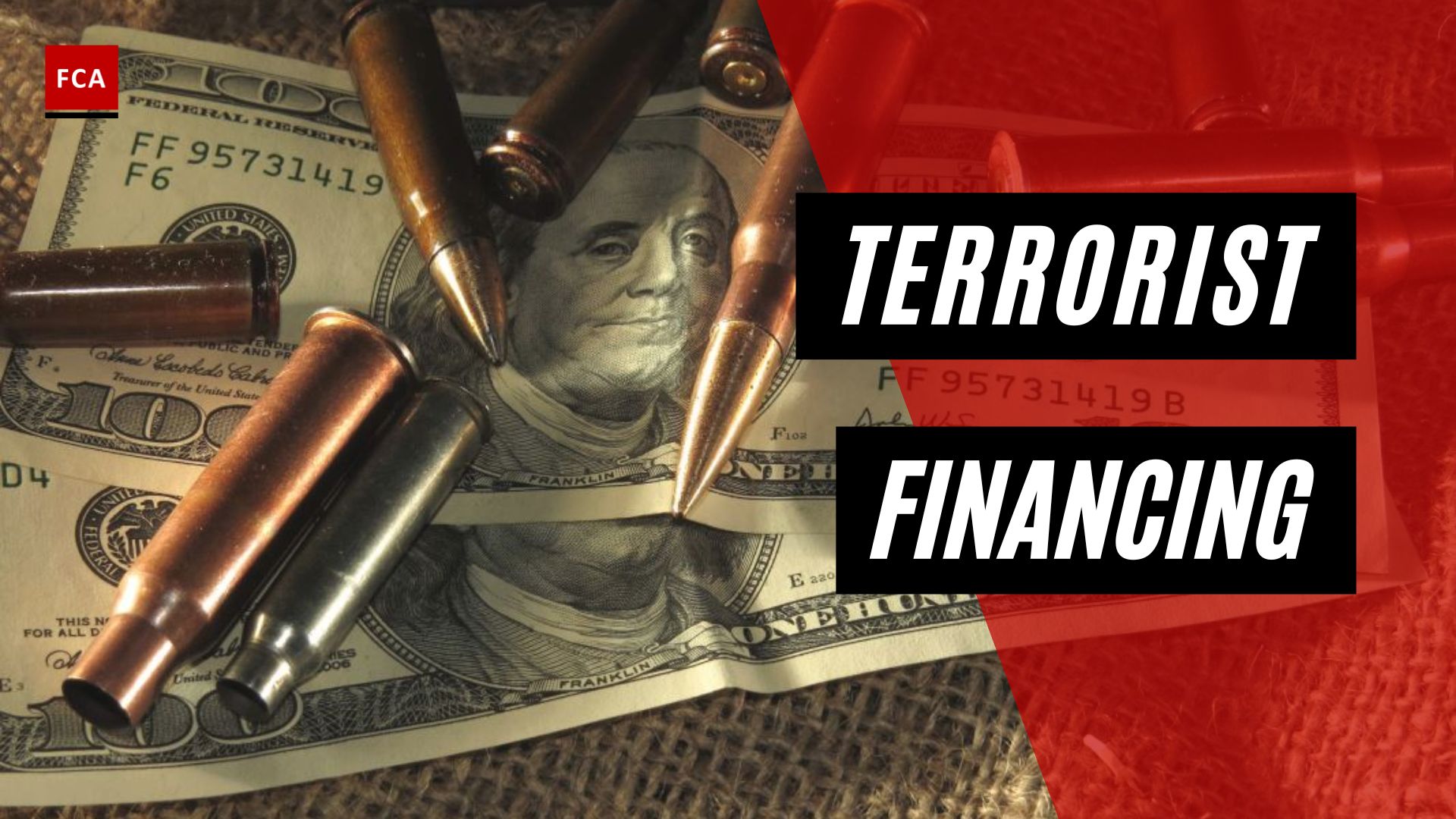India And Hong Kong Collaborate To Uncover Diamond Trade Money Laundering Network; Money Laundering Via Illicit Trade Hovering At 5% Of India’s GDP Says FICCI Study
Money laundering, a pervasive global challenge, involves concealing the illicit origins of criminal proceeds to legitimize ill-gotten gains. A recent study by the Federation of Indian Chambers of Commerce and Industry (FICCI) has unearthed the growing threat of illicit trade in India, characterizing it as a significant menace to both the economy and national security. The FICCI report sheds light on the extensive growth of trade-based money laundering, estimating its impact to be around 5% of India's GDP. The study draws attention to the alarming figures, citing data from international agencies, the Directorate of Revenue Intelligence (DRI), and Global Financial Integrity (GFI), reflecting the urgent need for a comprehensive strategy to combat this challenge.

India and Hong Kong collaboratively dismantled a money laundering network focused on the diamond trade, as announced by the finance ministry on Friday. The scheme involved the illicit remittance of foreign currency from India by importing inexpensive synthetic diamonds.
Indian traders, falsely declaring these diamonds as authentic, imported them from Hong Kong, resulting in the arrest of four individuals.
In a noteworthy display of bilateral cooperation, the finance ministry stated that the customs departments of India and Hong Kong exposed a significant instance of trade-based money laundering.
The case revolved around Hong Kong-based exporters and Indian importers situated in a special economic zone; the joint efforts revealed an intricate web of data exchange between the two countries.
The Directorate of Revenue Intelligence (DRI) uncovered a case where synthetic diamonds were imported into India with an inflated valuation of over 100 times their actual worth.
The investigation disclosed that the importing entity not only engaged in overvaluing diamonds but also exported jewellery embedded with diamonds at significantly inflated values to Hong Kong and other countries.

The finance ministry’s statement highlighted a peculiar aspect of the operation, where the majority of the inflated import value was remitted out of the country through legitimate banking channels.
However, the remittances received for the exports were disproportionately low at around 0.2%, suggesting that the entire trade operation served as a cover for money laundering.
Further investigation revealed that the influx of funds into the importer’s bank account was facilitated through bank transactions involving various dummy firms in India, while the transfers were directed from a single bank account to overseas suppliers in Hong Kong.
The orchestrator of this trade-based money laundering was identified as being based in Hong Kong.
India’s customs department took action by arresting four individuals and issuing show-cause notices related to the seized goods. However, entities based in Hong Kong declined to respond or present themselves to Indian authorities.
In response, the DRI, utilizing bilateral international cooperation tools, sought assistance from Hong Kong customs to investigate the suspected firms based in Hong Kong.

The Problem Of Money Laundering
The concept of money laundering, as defined by the FATF, involves processing criminal proceeds to obscure their illegal origins and legitimize gains from illicit activities.
In 1988, the UN Convention Against Illicit Traffic in Narcotic Drugs & Psychotropic Substances acknowledged money laundering as a crucial element in drug trafficking and recognized the need to prevent the conversion or transfer of crime-derived property; it emphasized tracing the money trail to address both the crime and the perpetrator.
The establishment of the Financial Action Task Force (FATF) in 1989 marked a significant step in combating money laundering.
With 40 recommendations targeting proceeds from various crimes, the FATF acknowledged that the primary motivation for criminal activities is financial gain, leading to the broad categorization of money laundering as the processing of criminal proceeds to legitimize unlawful gains.
The World Economic Forum estimates the global illicit market at approximately $2.2 trillion, constituting around 3% of the world’s GDP.
In India, economist Prof Arun Kumar approximates the illicit economy at 62% of GDP, amounting to about Rs 93 lakh crore in 2016-17 prices. This substantial “black money” remains outside the tax net, hindering contributions to the exchequer and the national economy.
To evade tax authorities, the process of disguising criminal proceeds begins, involving the laundering of money from “black” to “white.”
The process includes placing the money into the financial system, layering to conceal its criminal origins, and integration to create a seemingly legal origin for the proceeds.

Money laundering has evolved, employing sophisticated methods such as cryptocurrencies, offshore accounts, professional enablers, and intermediaries, leading to trade-based money laundering (TBML).
TBML involves disguising the proceeds of crime through trade transactions to legitimize their illicit origins. With global trade surpassing $28 trillion, misrepresentation of price, quantity, or quality of imports and exports facilitates TBML.
Over-invoicing and under-invoicing occur by mis-declaring the price of goods or services, allowing the transfer of additional value between the importer and exporter.
Every instance of over-invoicing or under-invoicing in trade transactions implies significant tax consequences. Overvaluing exports results in earning more foreign exchange, considered laundered proceeds.
Exporters, benefitting from additional export incentives, often operate in collusion with importers, both entities frequently controlled by the same party in a tax haven.
Trade-based money laundering involves the strategic overvaluation of imports or undervaluation of exports to manipulate prices and transfer funds.
‘Round-tripping’ occurs when laundered funds return to the origin country as investments or trade proceeds. Circular trading, a common phenomenon in India, involves the repetitive movement of the same goods to manipulate prices and transfer funds, especially notable in the context of diamonds.
Trade-based money laundering, more intricate than hawala transactions, poses detection challenges and effective response necessitates coordinated action among multiple agencies, including Customs, the Enforcement Directorate, the Financial Intelligence Unit, Income Tax authorities, SEBI (market regulator), and the Central Bureau of Investigation.

Money Laundering Via Illicit Trade Hovering At 5% Of India’s GDP Says FICCI Study.
The FICCI report reveals that trade-based money laundering in India reached a staggering $674.9 billion over the 10-year period from 2009 to 2018, emphasizing the escalating magnitude of illicit trade.
Recent data from the DRI indicate a substantial trade gap due to mis-invoicing; the study highlights the growing prevalence of illicit trade, exemplified by a 40% increase in duty evasion instances identified in the Smuggling in India report for 2021-22.
Implications for National Security
The study links illicit trade directly to organized crime and terrorism, citing the convergence of trade-based money laundering with terrorism as a significant concern for national security.
It points out that the Global Organised Crime Index (2021) shows India’s significant influence in criminal networks, raising the overall score for the illegal economy to 6.3, higher than the average for 122 countries.

Recommendations for Action
To address the complex challenges posed by illicit trade, the FICCI study proposes a comprehensive approach encapsulated in the 6Cs:
- Cognizance: Acknowledge terrorism and organized crime within a regulatory framework.
- Critical Evaluation: Continuously assess and analyze illicit financial flows.
- Central Coordination: Establish a central nodal agency for enhanced coordination among relevant authorities.
- Consumer Awareness: Foster awareness and influence consumer preferences to deter engagement with illicit goods.
- Combating TBML: Implement strategies to combat trade-based money laundering effectively.
- International Cooperation: Encourage cooperation and coordination at the international level to address the global dimensions of illicit trade.
The Last Bit, The FICCI study paints a stark picture of the impact of illicit trade on India’s economy and security, emphasizing the need for immediate and coordinated action to mitigate the risks associated with organized crime, terrorism, and the intricate web of trade-based money laundering.




